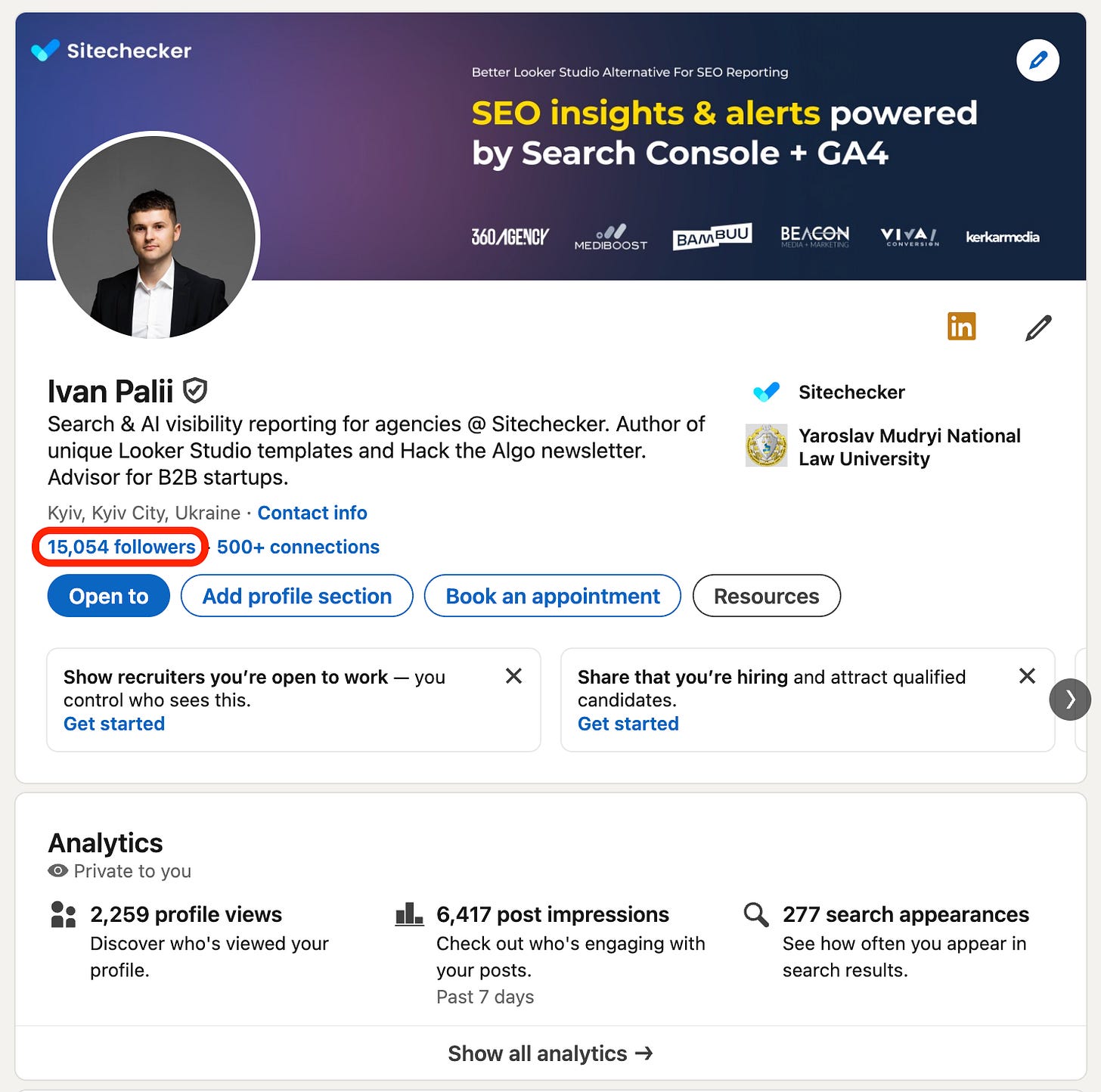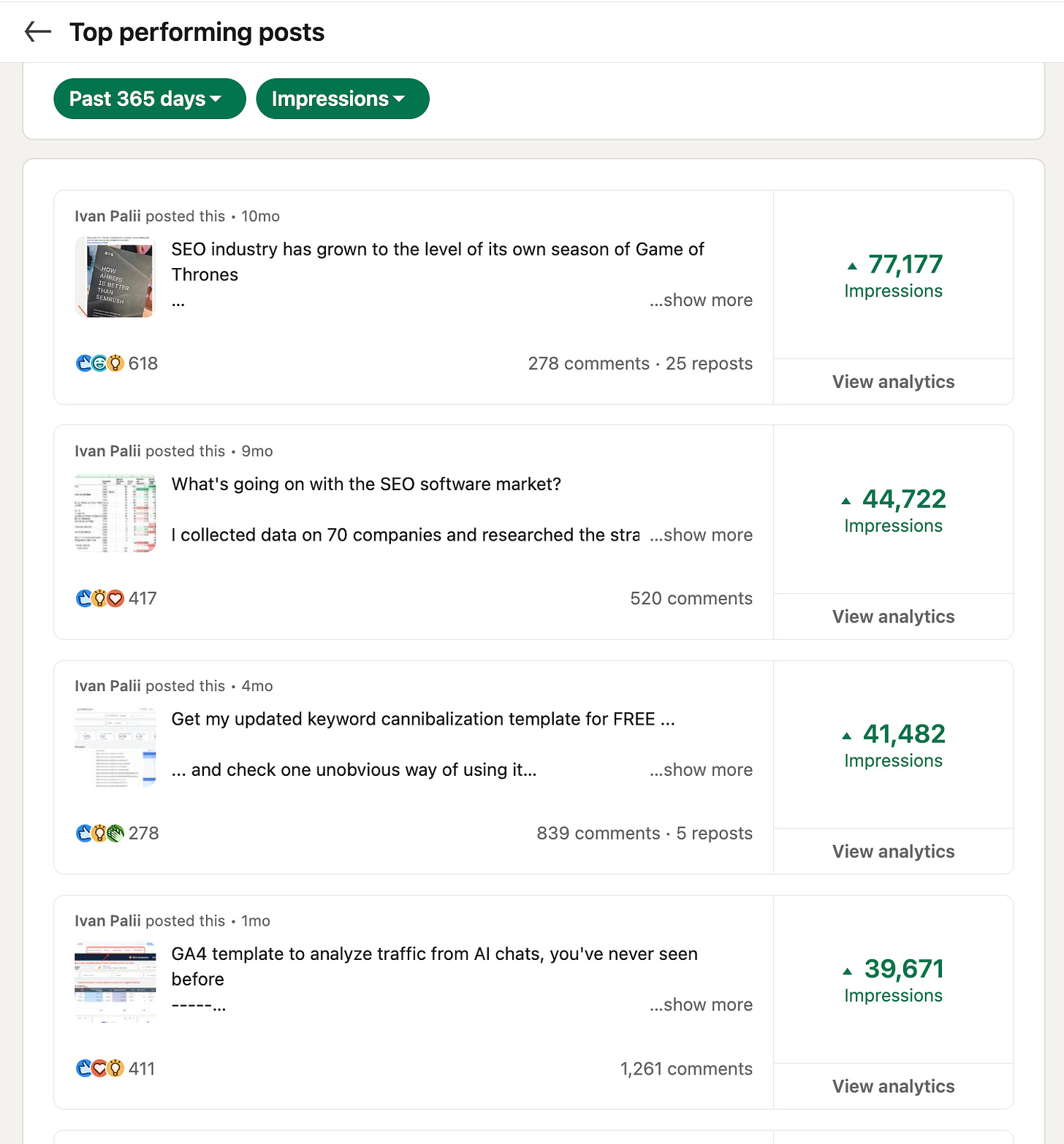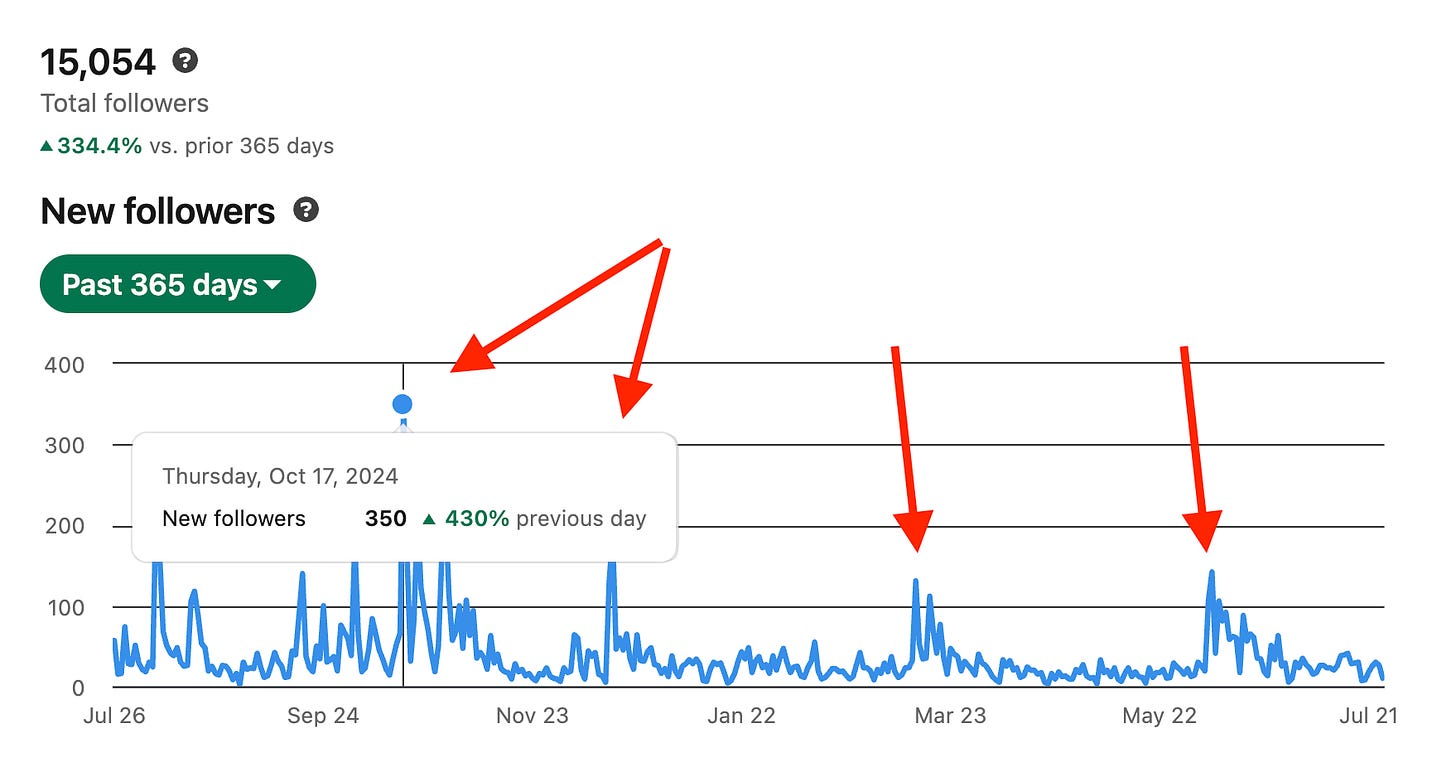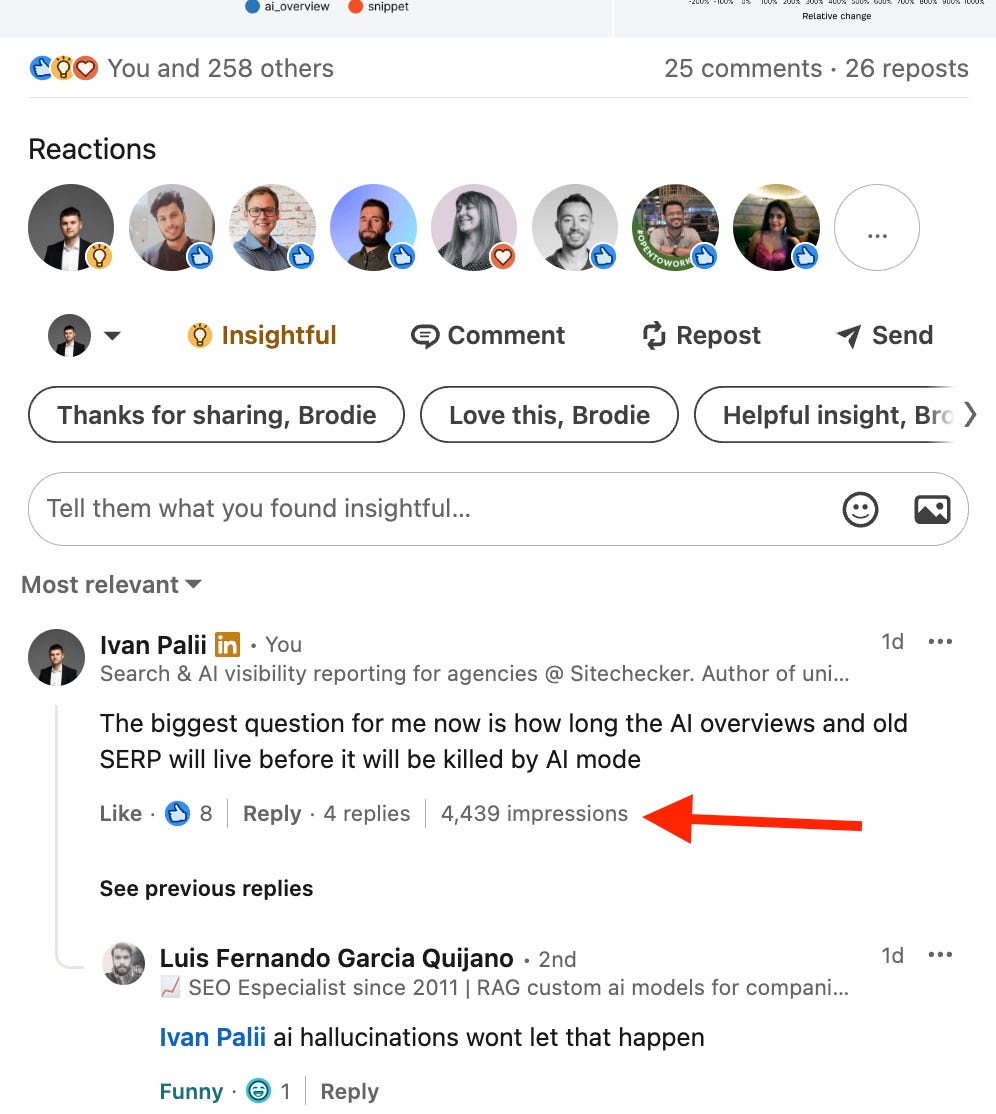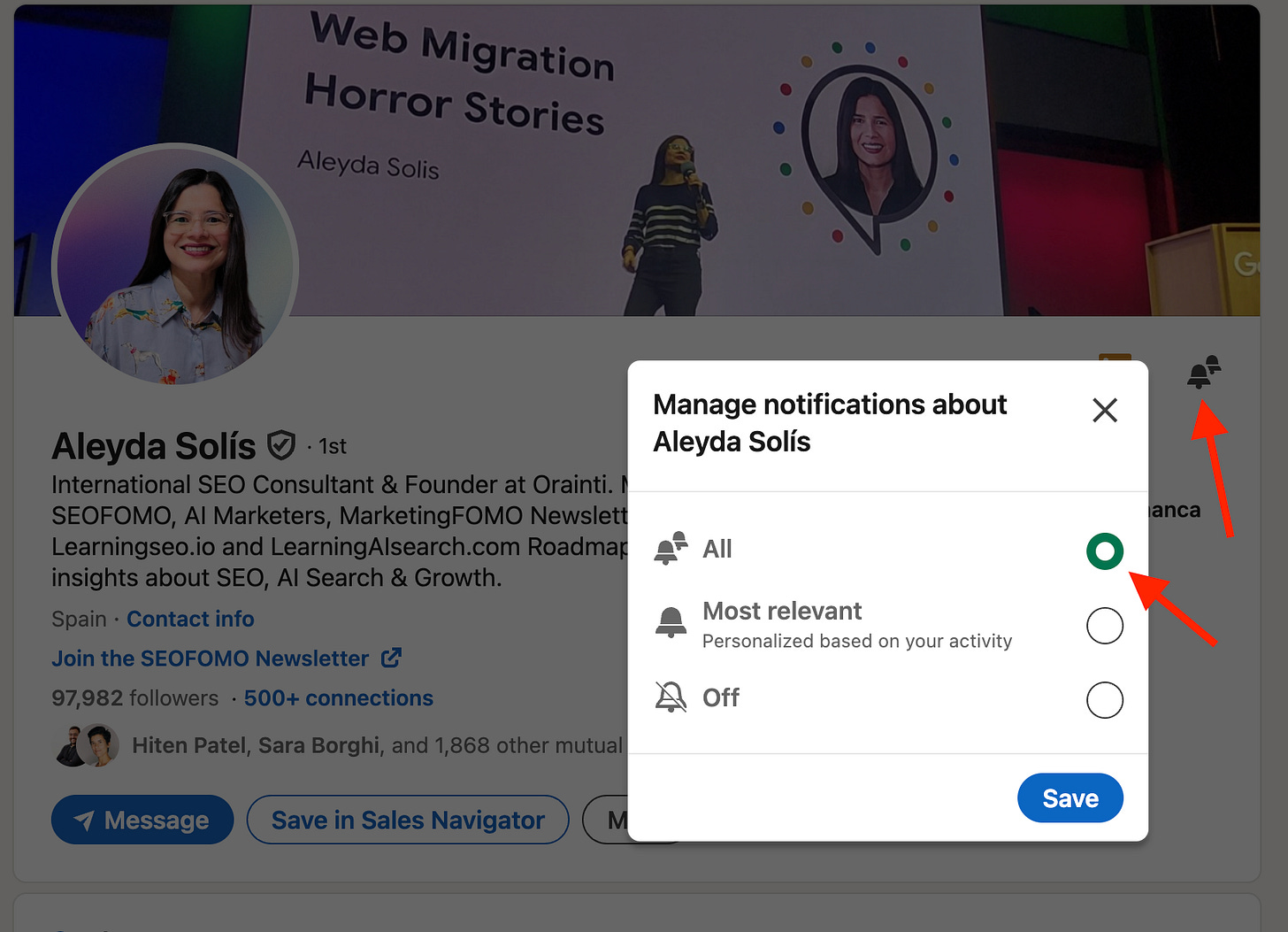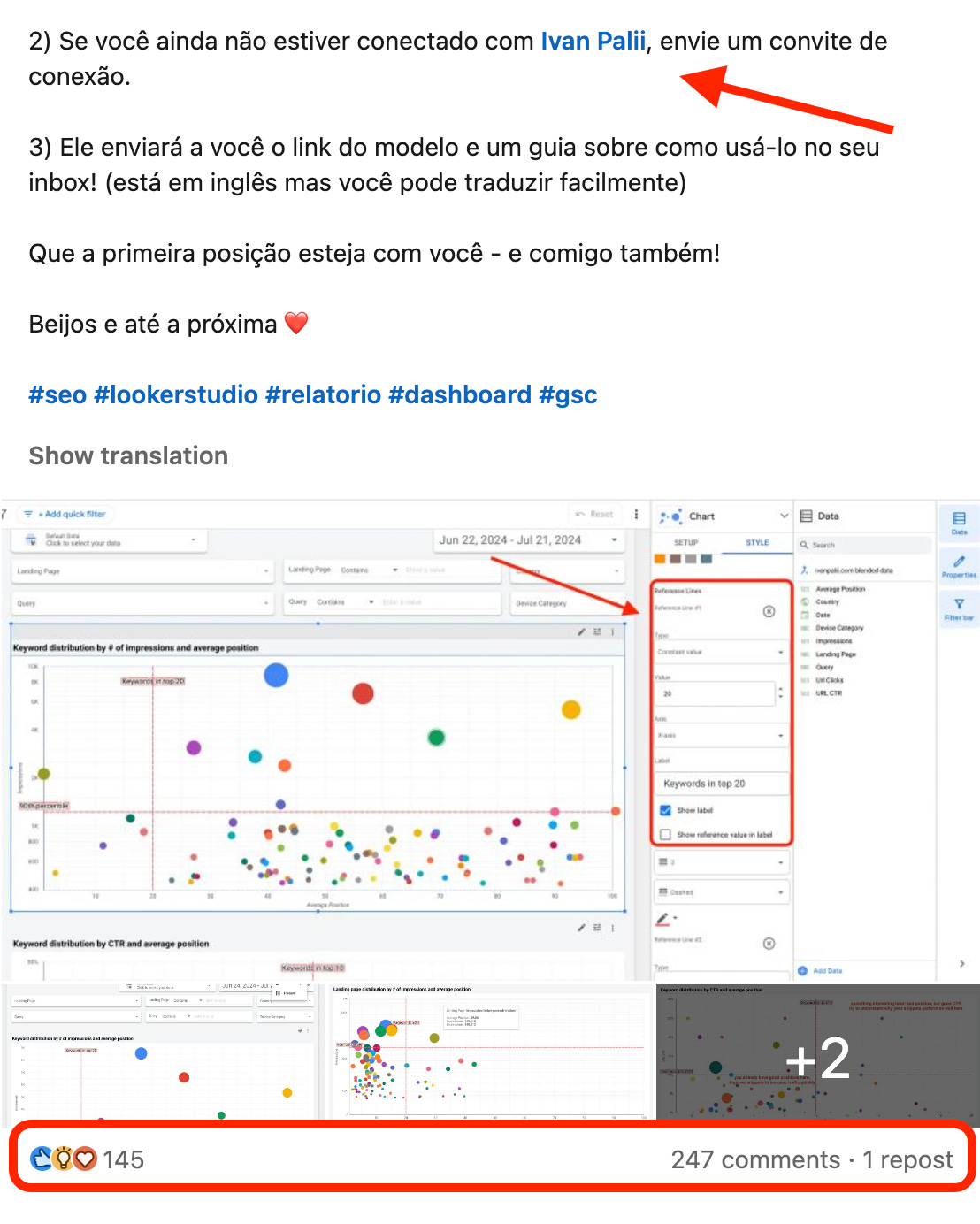12 lessons on how to grow on LinkedIn
Based on my data and mistakes, after reaching 15k followers in 18 months.
Today, fewer and fewer people ask WHY to grow on LinkedIn. For most people who work in B2B, the answer is obvious.
The question of HOW to grow is more popular because things change fast: LinkedIn updates its algorithm often, it creates new restrictions, and competition grows fast as more and more people start publishing content.
Often, people with more experience, better content, and case studies lose to people who just figured out the rules of this game better and work more consistently.
I grew from 2k to 10k followers in 10 months, and then from 10k to 15k followers in 8 months. I believe you’ll be able to move faster after reading these lessons.
Try my templates, if you are tired of the non-friendly interfaces of GA, GSC & GAds:
1. Viral posts are the only leverage to grow fast
My goal in 2024 was to achieve 10k followers by the end of 2024. In the summer, I started to worry because I was adding 500-600 subscribers per month, while I needed at least 700 per month.
Then this happened. One viral post about the fight between Semrush and Ahrefs brought me 1k followers in a week!
After researching the stats from other SEO influencers, I found similar patterns. Most of their charts of the growth in followers have spikes.
In my case, two types of posts were the most successful: my Looker Studio templates and my thoughts about trending news in the SEO space.
So, there are two lessons for growth here:
1/ Create a lot of free value and give it only as a reward for engagement.
You were probably involved in such posts as a reader.
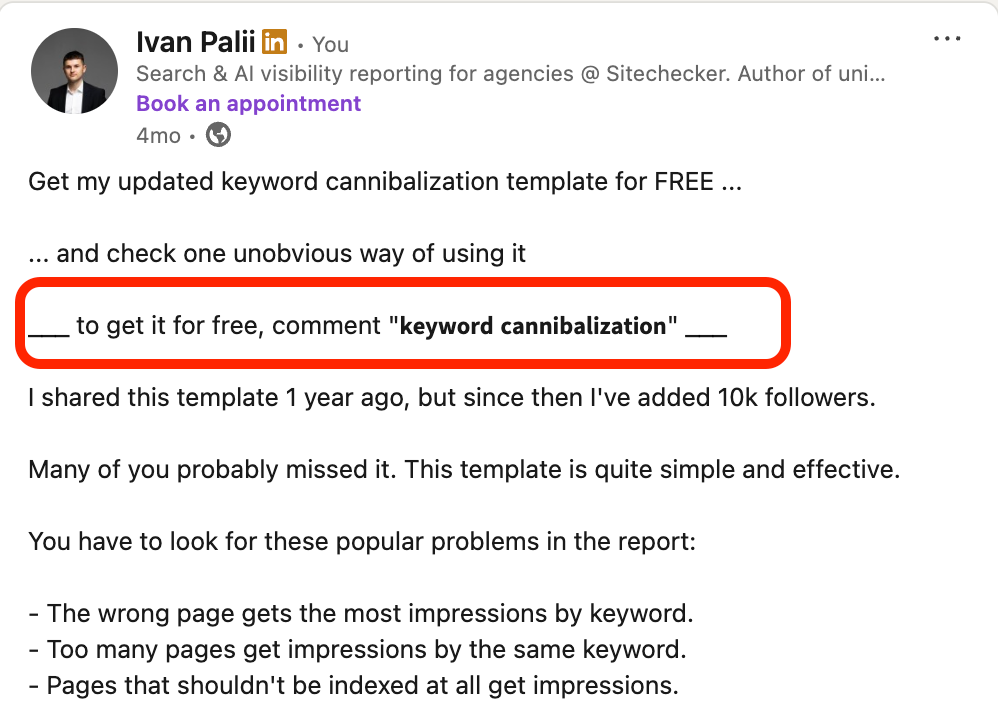
2/ Constantly practice riding the wave of trending news in your industry.
It may be harder. You have to monitor news in your industry, and when something spicy happens, you should publish this news and your thoughts immediately.
2. Consider your comments as posts
For most people, it was hard to consider comments seriously. Especially, after seeing how many AI comments and non-valuable comments appear under posts.
However, LinkedIn changed it after adding an option to see how many impressions your comments generate.
Once you start doing it, you’ll find that often your comments generate more impressions than your average post. However, it’s not enough to leave comments under all posts in your feed.
To succeed in this tactic, you have:
leave highly valuable comments;
leave them first;
leave them under the posts of big influencers.
To implement it, find top LinkedIn influencers in your industry and choose to get notifications for all their posts.
3. Collaborate with local influencers
I publish my posts with Looker Studio templates in English. Even when they become viral and I reach 50k people, there is still a huge worldwide audience that hasn’t seen them.
I’ve tried distributing it by partnering with influencers from Brazil, Spain, France, Italy, Turkey, etc. They published the same posts in their language, tagged me, and said that people need to connect with me to get the template.
Also, there are two lessons here:
The cost of replication is always cheaper than creating new value, so don't stop distributing your lead magnet until you reach your entire target audience.
A huge number of people in your industry do not speak English but need your product or lead magnet.
4. Send connection requests to your ICP
Sending friend requests is the most limited option for growing followers, but it helps to attract the biggest share of your ICP.
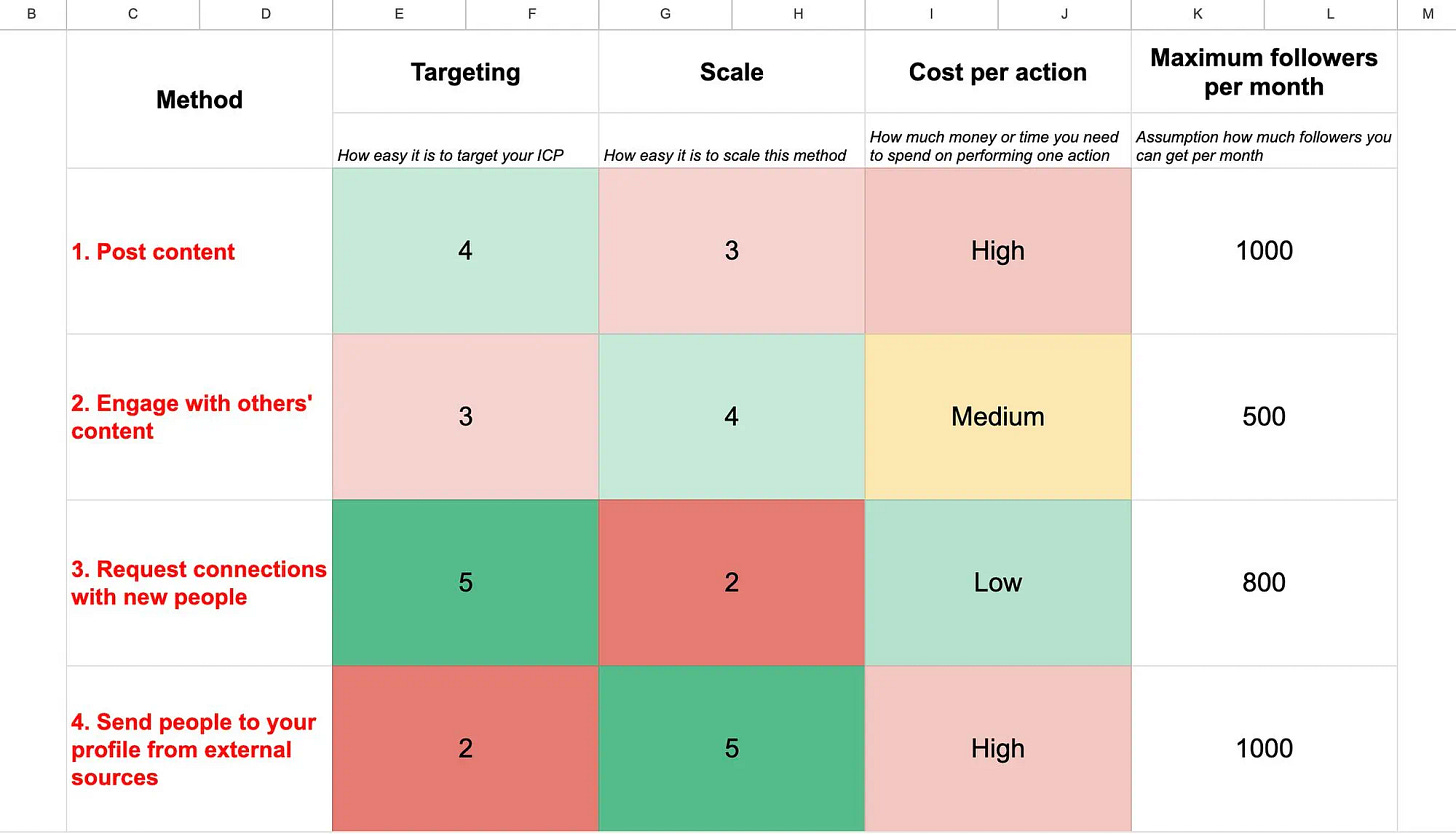
Most influencers with more than 10k followers stop doing this and gradually reduce the share of active, highly qualified specialists who read their content and participate in discussions.
Also, adding non-relevant or inactive people to contacts is a big risk for your reach.
I didn't see it in the LinkedIn algorithm guides or updates, but I assume here the same logic works as on all social media.
LinkedIn evaluates your post performance in the first hour, showing it to your followers. If you have too many non-relevant or inactive followers, you'll have a low 1st hour engagement rate, and it will kill all your efforts.
That's why I almost don't add people who didn't post anything on LinkedIn yet and send connection requests only to my ICPs: SEO experts and B2B influencers.
5. Add LinkedIn as an everyday task to your calendar
You have to take it seriously. Every day when I visit LinkedIn, I try to:
publish one post;
leave 3-5 comments;
send connection requests to 10-20 people;
write a message to 10-20 people who accepted my connection.
Once you’ve set up a routine, it’s important to stop measuring whether it's worth it!
You won’t get anything in 1 day or 1 week. You have to do a retrospective only once per month, quarter.
Sometimes you just don’t do good enough or not long enough. Considering LinkedIn as a daily task, you’ll get better at writing, your ICP detection, understanding what the biggest pain of your market is now, etc.
For half of my posts, I didn’t expect that they would become viral. The more you write, the more you increase your chances of becoming viral.
6. Block AI comments under your posts
If you won’t do it, people who leave good comments will ignore your posts. You are responsible for the quality of discussions under your posts!
It’s easy to detect people who leave AI comments. If you see that the comment is too basic, too obvious, visit the person’s profile and check the last 3 comments they left. In most cases, you’ll see that they leave comments every minute. It’s a clear sign.
7. Experimenting with different formats is overrated
After several experiments with different formats, I realized that I don't like carousels, neither creating nor reading.
So I decided for myself that the text + image format is my strongest side and I will concentrate only on it.
The biggest influencers I see follow this format in 80% cases.
8. Don't be afraid to ignore the wrong audience
Once you start growing in impressions and followers, more and more people will write you for different reasons.
I tried to help everyone who wrote me a message or comment. But as the number of requests grew, I realized that it would end badly. You have to protect your time and keep your goal: reaching as many people as possible who need your product or service.
9. Number of followers is a proxy metric
It shouldn’t be your primary goal.
This is the most visible and the easiest to measure; however, there is too much noise:
How many of these followers engage with your content regularly?
How many of these followers are your target audience?
How many of these followers are willing to answer your question in private messages?
So, if not the number of followers, then what goal should you set for yourself?
How many people who your ICP engage with your content?
How many deep conversations have you had with your ICP?
How many high-authority influencers engage with your content?
How many people ask you for advice via DM?
How many people who booked a demo say they found you on LinkedIn?
How many people invite you to take part in a podcast, conference, or other event?
How many brands want to hire you as an advisor or brand ambassador?
10. Followers is a proxy metric, but it works for trust
The number of followers doesn’t pay bills. However, this proxy metric has a huge impact on the decision of your ICP whether it is worth accepting your connection request and reading your first message.
I discovered it after reaching 10k followers. More and more people who didn’t accept my friend requests before start accepting them.
Social proof worked, works, and will work. On landing pages, offline ads, or LinkedIn profiles. This is a proxy metric, but it is still hard to hack and repeat. It's like backlinks for Google.
11. Don’t underestimate the side effects of growth on LinkedIn
If you try to measure the ROI of your LinkedIn activity each month, you'll be sad and stop soon. For 3 reasons:
You don't count the compounding effect of your efforts (it may be worth writing for 5 years for only one post in the future that will generate you $1mln ARR in 1 week).
You never know what impact the next contact will make on your business; it may new big enterprise customer or investor, or partner.
You don't know how much value it will create for other channels like cold email outreach.
12. If you don't know how to earn with 5k followers, you won't earn with 50k followers
I saw this statement in a post on LinkedIn and agree with it. The key to success is to:
Create your high LTV offer.
Create a spicy narrative.
Define your ICP and focus all activity around it.
Create a lot of free value related to the core high LTV offer
For example, my spicy narrative: most agencies do SEO reporting wrong. My Looker Studio templates and Sitechecker help to solve that.
15k is a small milestone, but I feel that after 10k, the game has changed.
When you start your journey, the "low base effect" works. You have a lot of new interesting things to share. Then it becomes harder to deliver value every month.
However:
Now I understand the rules of this game better.
I know that discipline is the most important thing here.
I feel I can hit 100k followers in the SEO / marketing niche in 3 years.
Yes, an algorithm changes often. Yes, many new people start creating content here because they see huge value in it.
However, too few have a unique combination of the ability to create a unique value and the ability to keep the rhythm of being active here for years.


